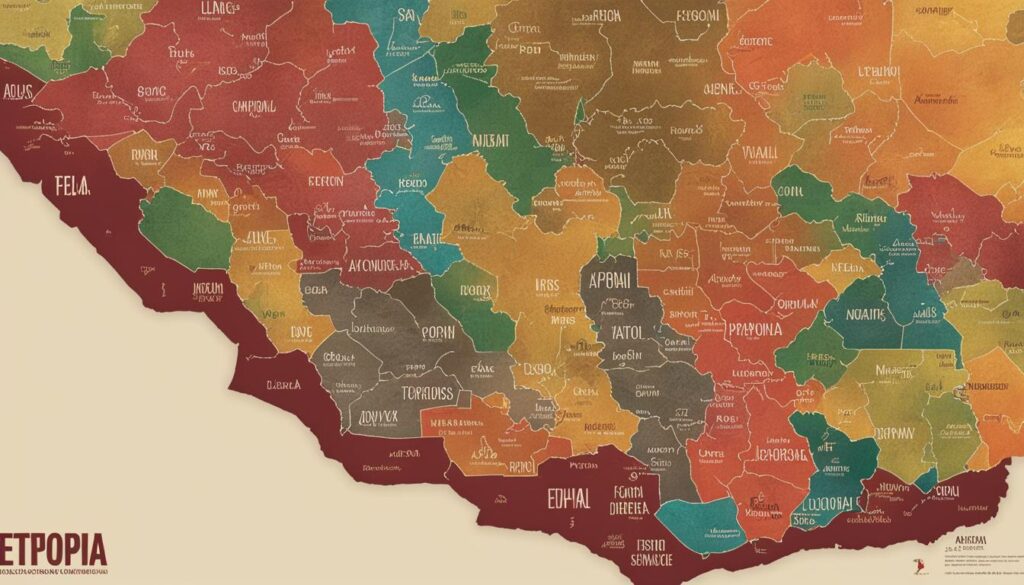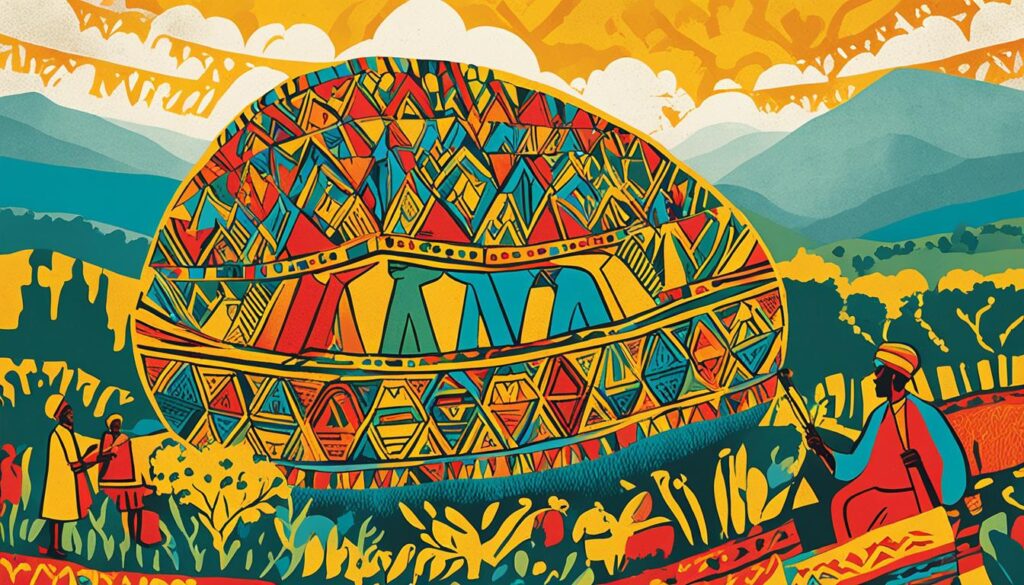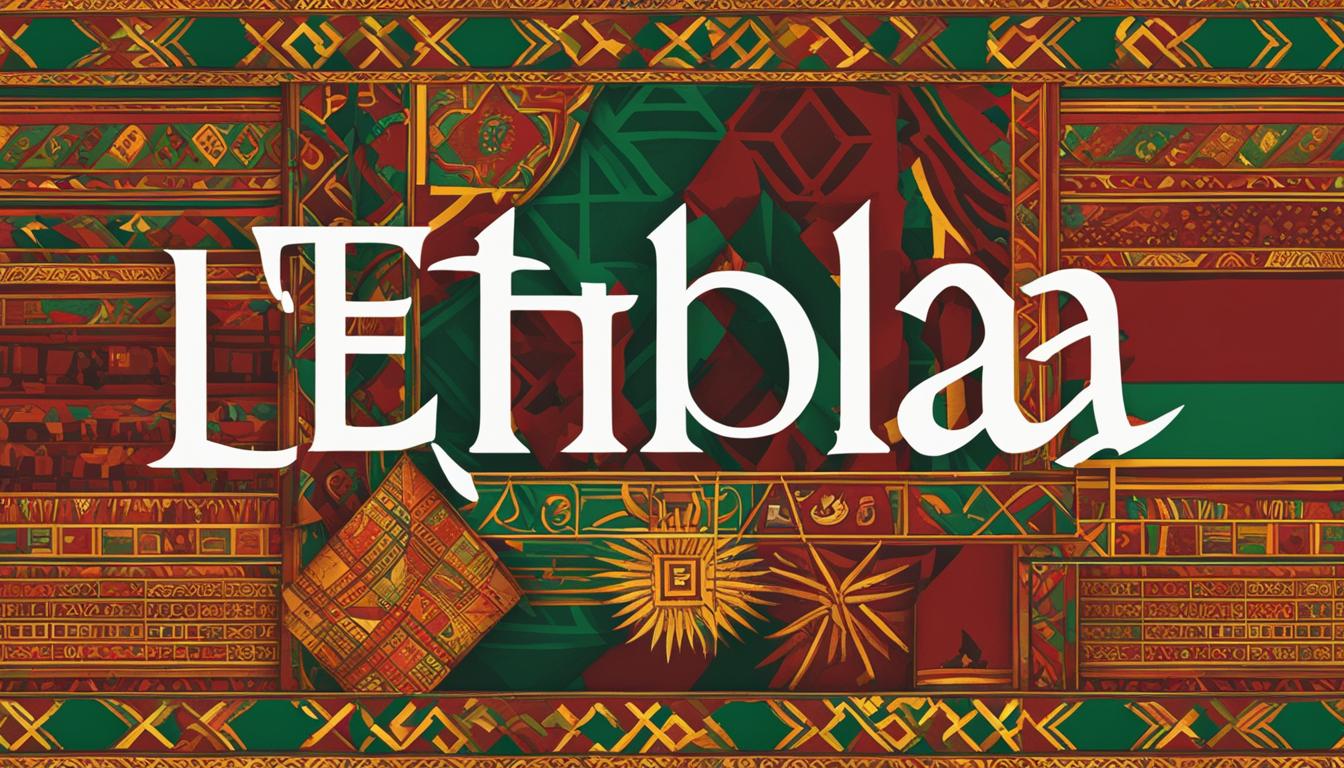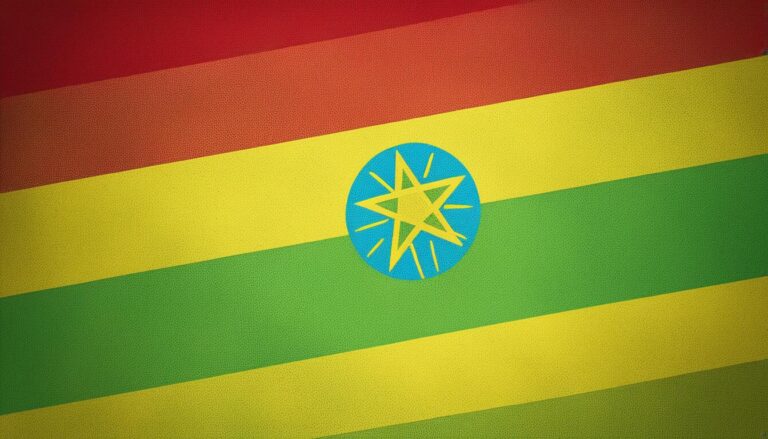How Many Languages Are in Ethiopia?
When we think of the diverse cultures and rich heritage of Ethiopia, we might not immediately realize just how many languages are spoken within its borders. Surprisingly, Ethiopia is home to a staggering number of languages, with over 90 individual languages listed by Ethnologue, a trusted linguistic database. This linguistic diversity is a testament to the country’s multiculturalism and the vibrant tapestry of languages and cultures that thrive within its borders.
Key Takeaways:
- Ethiopia boasts over 90 individual languages, reflecting its linguistic diversity.
- The majority of the population in Ethiopia speaks Afroasiatic languages, specifically of the Cushitic or Semitic branches.
- The most widely spoken languages in Ethiopia include Oromo, Amharic, Somali, and Tigrinya.
- Linguistic diversity in Ethiopia is categorized into language groups such as Semitic, Cushitic, Omotic, and Nilo-Saharan.
- Amharic serves as the official language of Ethiopia, with Oromo, Somali, Tigrinya, and Afar recognized as national languages.
Linguistic Diversity in Ethiopia
Ethiopia’s linguistic diversity is a reflection of its multicultural and multi-ethnic makeup. The country is home to a wide range of languages and dialects, each contributing to the rich tapestry of Ethiopia’s heritage. These languages can be categorized into four major language groups:
- Semitic
- Cushitic
- Omotic
- Nilo-Saharan
The Semitic language group includes languages such as Amharic, Tigrinya, and Argobba, while the Cushitic group comprises languages like Oromo, Somali, and Afar. Languages belonging to the Omotic group include Bench, Aari, and Hamer, among others. The Nilo-Saharan group includes languages like Nuer, Gumuz, and Maban, spoken by various ethnic communities.
The linguistic diversity in Ethiopia extends beyond these major groups to encompass a plethora of dialects and regional language groups. These smaller language variations play a significant role in preserving cultural traditions and promoting effective communication within communities.
“Linguistic diversity is not only a reflection of Ethiopia’s cultural richness but also a testament to the country’s commitment to inclusivity and the preservation of traditional knowledge.”
The Ethiopian government recognizes the importance of linguistic diversity and cultural heritage, actively promoting the preservation and use of various languages in education, media, and cultural expressions. This commitment helps to foster a sense of belonging and pride among Ethiopia’s diverse communities.
The Impact of Linguistic Diversity
Ethiopia’s linguistic diversity has numerous benefits, both culturally and economically. Firstly, it serves as a vehicle for cultural exchange and interaction, enabling individuals from different language groups to engage in meaningful dialogue and understand different perspectives.
Secondly, linguistic diversity contributes to the preservation of traditional knowledge, as languages often carry unique cultural expressions, oral histories, and traditional practices. Protecting these languages ensures the continuity of cultural heritage for future generations.
Furthermore, linguistic diversity fosters creativity and innovation, as different languages provide alternative ways of perceiving and understanding the world. Multilingualism in Ethiopia opens up opportunities for intercultural collaboration and the exchange of ideas, which can lead to advancements in various fields.
| Language Group | Examples of Languages | Approximate Number of Speakers |
|---|---|---|
| Semitic | Amharic, Tigrinya, Argobba | Approximately 35 million |
| Cushitic | Oromo, Somali, Afar | Approximately 40 million |
| Omotic | Bench, Aari, Hamer | Approximately 1.5 million |
| Nilo-Saharan | Nuer, Gumuz, Maban | Approximately 1 million |
The table above provides an overview of the major language groups in Ethiopia, along with examples of languages within each group and their approximate number of speakers. It is important to note that these numbers are approximate and based on available data.
In the next section, we will explore the official and national languages of Ethiopia, delving into their significance and role in Ethiopian society.
Official and National Languages of Ethiopia

In Ethiopia, the official language is Amharic, which holds significant historical and cultural significance. It serves as the medium for federal government affairs, embodying the language of the Ethiopian royal court and the Ethiopian Orthodox Tewahedo Church.
In addition to Amharic, Ethiopia recognizes several national languages that reflect the diverse ethnic groups and regions within the country. These national languages include Oromo, Somali, Tigrinya, and Afar. They play a crucial role in preserving cultural identity and promoting linguistic rights across Ethiopia.
The recognition of Oromo, Somali, Tigrinya, and Afar as national languages showcases Ethiopia’s commitment to embracing and valuing linguistic diversity. It acknowledges the importance of these languages in fostering communication, cultural expression, and individual and collective identity among different communities throughout the country.
By recognizing and preserving these national languages, Ethiopia not only strengthens its cultural fabric but also promotes inclusivity and ensures that all citizens have access to education, governance, and public services in their respective languages.
These official and national languages reflect Ethiopia’s rich linguistic landscape, which is characterized by a tapestry of diverse languages and dialects. The linguistic diversity of Ethiopia is a testament to the country’s multicultural heritage and serves as a source of cultural pride and unity.
Amharic – The Heartbeat of Ethiopia

Amharic, with over 25 million native speakers, holds a prominent position among the languages spoken in Ethiopia. As a Semitic language, it carries a rich cultural heritage and serves as a vital element in Ethiopian history. Amharic is not only a means of communication but also a symbol of identity and unity for the Ethiopian people.
Amharic – The Language of Influence
Amharic has played a pivotal role in Ethiopian society, being the language of the Ethiopian royal court, clergy, and scholars throughout the centuries. It has influenced various aspects of Ethiopian culture, including literature, music, and poetry. Amharic’s vibrant linguistic features, such as its complex verb conjugations and noun declensions, contribute to its distinctiveness and depth.
“Amharic is the heartbeat of Ethiopia, pulsating through every aspect of our cultural fabric. It reflects our history, connects our communities, and preserves our traditions.”
Amharic – The Language of Expression
Amharic serves as a powerful tool of expression, enabling Ethiopians to convey their thoughts, emotions, and aspirations effectively. Whether it is the recitation of ancient epics or the performance of traditional music, Amharic breathes life into Ethiopia’s artistic endeavors and preserves its cultural heritage.
Amharic Script and Writing
Amharic is written using the Ge’ez script, a unique writing system with its own set of characters. The script has a long history, with its origins dating back to the ancient Aksumite Empire. The Ge’ez script, adapted to write Amharic, captures the nuances and intricacies of the language, allowing for precise and accurate written communication.
Amharic at a Glance
Here is a brief overview of Amharic:
| Language | Family | Script | Native Speakers |
|---|---|---|---|
| Amharic | Semitic | Ge’ez | Over 25 million |
Oromo – Ethiopia’s National Language
In Ethiopia, language diversity is a significant aspect of the country’s cultural fabric. One of the prominent languages spoken in Ethiopia is Oromo, which holds the distinction of being recognized as the national language. With over 40 million native speakers, Oromo plays a crucial role in fostering communication and preserving the cultural identity of the Oromo people.
Oromo belongs to the Afroasiatic language family, specifically the Cushitic branch. It has its unique script, which was officially adopted in the mid-1990s, further enhancing its status as a symbol of linguistic heritage and independence. The Oromo language is not merely a means of communication but also an avenue for expressing the history, aspirations, and resilience of the Oromo community.
Oromo’s cultural significance extends beyond spoken conversations. It finds its way into literature, music, and poetry, where it serves as a powerful form of artistic expression. This multifaceted use of Oromo in various creative mediums further enriches the cultural tapestry of Ethiopia, showcasing the diverse linguistic and artistic traditions within the country.
| Language | Language Family | Script | Number of Native Speakers |
|---|---|---|---|
| Oromo | Afroasiatic (Cushitic) | Oromo script | Over 40 million |
Tigrinya – A Federal and Regional Language
Tigrinya is an important language in Ethiopia, playing the role of an official language primarily spoken in the Tigray Region. It holds a special place in Ethiopian linguistics and cultural history, being associated with the ancient Axumite Kingdom and early Christian texts. Tigrinya, a Semitic language, shares similarities with Amharic but has its unique characteristics that make it stand out.
The Tigrayan people, closely connected to their language, consider Tigrinya as a medium for cultural expression and identity. Its grammatical gender system and vowel patterns contribute to the depth and nuance of the language, enhancing its expressive capabilities. Tigrinya serves as a powerful tool for preserving and promoting Tigrayan culture and heritage.
Tigrinya is also taught and learned in educational institutions, fostering a sense of pride and belonging among Tigrayan students. The language plays a role in literature, music, and other artistic forms, contributing to the vibrant cultural landscape of Ethiopia.
To understand the significance of Tigrinya, let’s take a closer look at its features:
| Features of Tigrinya | |
|---|---|
| Official Language | Yes |
| Primary Spoken Region | Tigray |
| Language Family | Semitic |
| Shared Characteristics | Similarities with Amharic |
| Cultural Significance | Associated with ancient Axumite Kingdom and early Christian texts |
Tigrinya continues to thrive as an integral part of Ethiopia’s linguistic mosaic, celebrating the diverse heritage and cultural fabric of the nation.
Conclusion
Ethiopia’s linguistic diversity is a testament to the richness of its cultural heritage and the multiculturalism that defines the country. With a plethora of languages and dialects spoken throughout its land, Ethiopia celebrates this linguistic diversity by recognizing multiple official and national languages. Amharic, Oromo, Somali, Tigrinya, and Afar play pivotal roles in Ethiopian society, acting as essential tools of communication, cultural expression, and identity formation. These languages exemplify the vibrant tapestry of Ethiopia’s languages and cultures.
The linguistic landscape of Ethiopia showcases the remarkable diversity and vitality of its people. From the Afroasiatic languages belonging to the Cushitic and Semitic branches to the Omotic and Nilo-Saharan language families, Ethiopia’s language groups exude unique characteristics and embrace regional diversity. This linguistic mosaic encompasses a wide array of dialects and language varieties, perpetuating cultural traditions and facilitating communication within communities.
Ethiopia’s official and national languages reflect the country’s commitment to preserving its linguistic heritage. Amharic, serving as the official language, holds historical and cultural significance, while Oromo, Somali, Tigrinya, and Afar, as national languages, mirror Ethiopia’s rich ethnic tapestry. These languages are crucial in preserving cultural identities, promoting linguistic rights, and fostering unity in diversity. Ethiopia’s linguistic landscape is a testament to the country’s enduring legacy and the power of language to shape and express national and individual identities.





